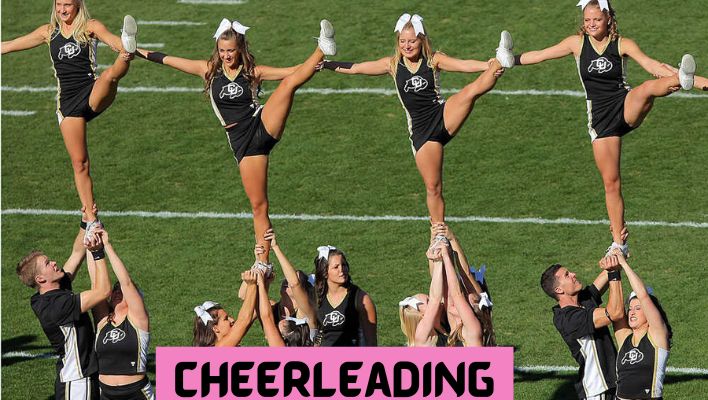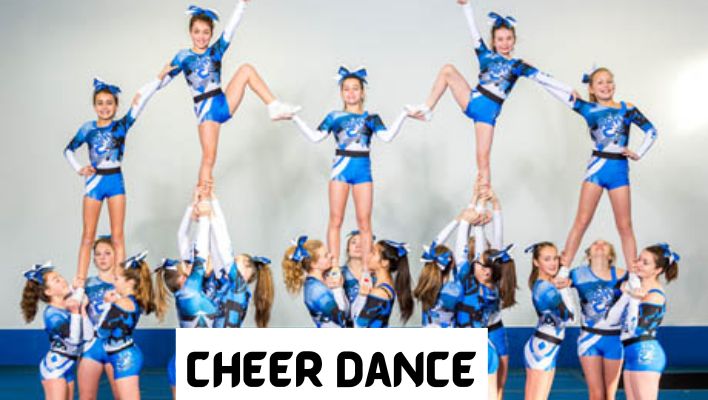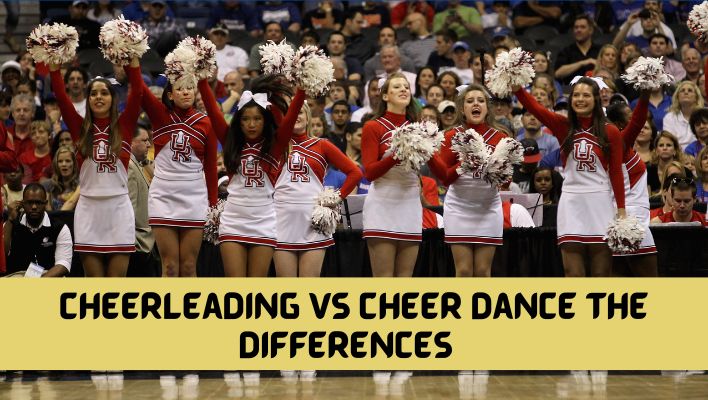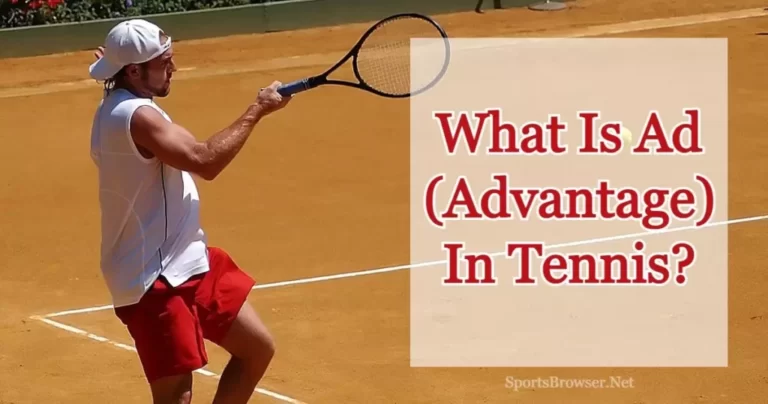Cheerleading Vs Cheer Dance – The Differences
The two sports of cheerleading and cheer dance are often considered complementary. Although they are constructed from the same core actions and moves, they frequently differ in interesting ways. But what are cheerleading and cheer dance differences?
One major difference between the two is cheerleading can be classified as a sport, whereas cheer dance is a form of art. They also have other differences, which tells that the two are completely different from one another, which I will discuss in today’s guide.
Let’s not drag and directly dig into it to learn about it.
Cheerleading

In the team sport of cheerleading, members assist their squad by cheering them on. They can do anything to energize the sports team and captivate the audience, from screaming slogans to engaging in strenuous physical activity.
Football has always played a big part in the history of cheerleading. It would be more accurate to argue that cheerleading is what it is today because of football. Chants follow the triumph yells of the cheerleaders in support of their squad. A full-fledged two-and-a-half-minute extravaganza of acrobatics, tumbling, and chanting follows.
Depending on the type of cheerleading team you are part of will determine how different or similar it is to dance. The types of cheerleading teams include middle school, high school, college cheerleading, Youth leagues, or athletic association teams. It also includes all-star and cheerleading academies.
Dance or Cheer dance

One of the best and most enjoyable things to do has always been dancing. People need help to explain their erratic actions when they are bopping to the music. Different types of dance styles and designs have evolved in various contexts. The following dancing styles are listed.
- Ballet
- Contemporary or modern ballet
- Tap
- Jazz
- Hip-hop
The Differences Between Cheerleading and Cheer dancing
Now that you know what cheerleading and dancing are, I want you to know their differences. The following is the list of all the differences these two have.
1. Origin
The origins of cheerleading can be traced back to a group of guys who managed football game crowds. Great yells and cheers to support their side in winning were heard after it. As opposed to this, dancing has always been a component of civilization, dating back to the period when cave dwellers danced around the fire.
Before ballet became a form of entertainment in the 15th century, the structured instruction of dance started with the court and social dancing of royalty.
2. Purpose
The purpose of a cheerleader is to energize the squad and amuse onlookers. They accomplish this by supporting their local sports team with acrobatic feats, gymnastic moves, and tumbles combined with yelling and cheering.
On the other hand, as was already established, dance is a type of art. It’s designed to convey feelings, tell a tale, or be a body’s natural way of expressing rhythm and movement.
3. Style of Movement
Cheerleading involves drill-style movement. There are also precise movements made in synchrony or a domino-like pattern for maximum impact. But dance is incredibly graceful. Everything revolves around flow, ebb, and the dancer’s skill. Being seen rather than heard is more important, as are the motions made.
4. Team or Individual
Cheerleading is always done in a group setting and against the clock. Cheerleading regulations stipulate that each squad shall have 5 to 32 members. Solitary or solo dance can be performed. It can also be performed in a trio, a dual, a pas de deux, or with a partner. There is no capacity restriction if everyone can comfortably and securely fit in the performance space.
5. Music
Cheerleading does not necessarily have to be performed to music. Instead, it can be done while the group is chanting under the direction of a leader. However, dancing can occasionally be done without music. Dance is motivated by rhythm, music, and beat.
6. Competitions
To win titles, honors, and trophies for their respective institutions, numerous cheerleading squads from schools and universities compete against one another. Due to the wide range of dancing styles, there are many different types of competitions. In some events, prizes like trophies and titles are at stake, while scholarships and spots in prominent dance programs are at stake in others.
7. Muscle Strength
The cheerleaders must have strong arms and upper bodies to lift one another. Additionally, they require it to support their bodies’ weight when they are falling. They also need strong upper legs to land from lifts and tumbles.
A dancer’s core must be more powerful than any other muscle when dancing. They can lift their arms and legs above their heads without straining or being hurt. Their ankles and feet should also be quite strong to perform all the pointing or pointe work, tap dancing, and relevé dance.
8. Costumes
Cheerleaders are expected to wear their allotted outfits; they are not allowed to wear costumes. In contrast, dancers dress in costumes typically constructed of lycra or spandex and embellished with sequins, rhinestones, tulles, and chiffons. Additionally, they must don theatrical makeup according to their role.
FAQs
Cheerleading is different from dancing. However, it combines some aspects of dancing, jumping, and gymnastic stunts to rally spectators to cheer on a sports team. Millions of dancers enjoy cheerleading all over the globe.
The movements of dancers are generally seen to be more flowing and acrobatic. While the movements of cheerleaders mostly consist of sharp actions and stunts. Cheerleaders mostly use cheers and stunts to create excitement among audiences.
The most important aspect of both cheerleading and cheer dancing is motion. Motions tend to make a routine or dance more unique and uniform among squad members. The motion also makes the performance look cleaner and sharper.
Conclusion
Now that you have learned the cheerleading and cheer dance differences, I hope you refrain from calling them the same. However they have some things in common, but that doesn’t make them the same. Both are different in their unique ways.
Please share your thoughts on this article in the comments below and let me know if you enjoyed reading it. Thank you!







